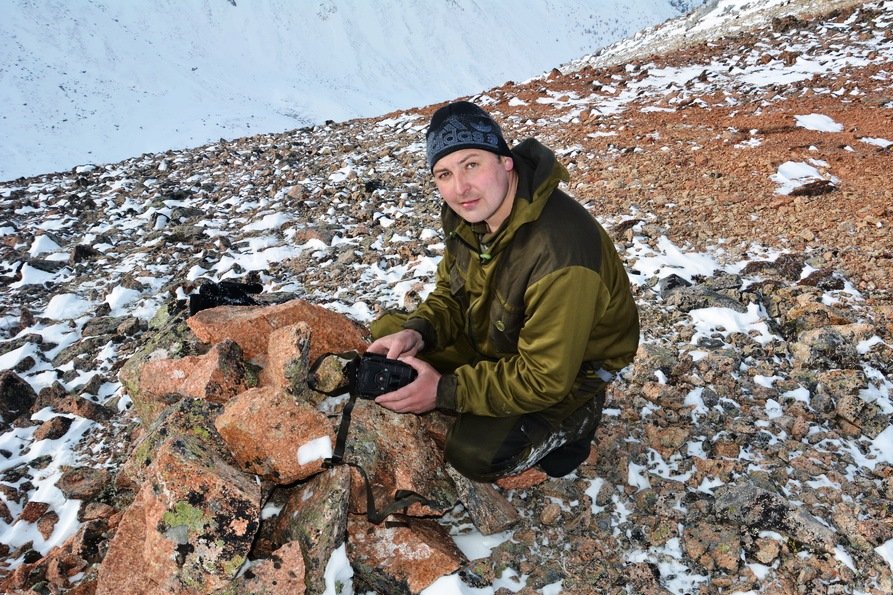Alexey Kitaev became one of the winners of the «Baikal Initiative» 2020 contest. He is the head of the scientific group that is working on the project «Rescue of the Khamar-Daban group of forest subspecies of wild reindeer in the central part of the Khamar-Daban range». Alexey Kitaev told us about the importance of his project and plans for its development.
How did you find out about the contest and why did you decide to participate?
Our team has submitted an application for participation in the «Baikal Initiative» contest in previous years. This year, we seriously prepared in advance, studied the projects of the winners of previous years and took part in a webinar organized by Lake Baikal Foundation together with the Agency for Strategic Initiatives.
The problem of preserving the reindeer is acute and the idea of putting forward this particular project has been ripe for us for a long time. We assembled the team back in 2019 and started planning to submit an application for participation in the competition. Our team includes experienced field workers, zoologists and researchers who are have organized and participated in many expeditions, including the conservation and study of wild reindeer, a forest subspecies of the Altai-Sayan population. Some experience has already been gained, but additional investments were needed to apply it. We learned from social networks that the «Baikal Initiative» 2020 contest was announced, studied the Competition Regulations, prepared an application and sent it for participation.
What is your project about? What is the reason for choosing a topic?
Our project «Rescue of the Khamar-Daban group of forest subspecies of wild reindeer in the central part of the Khamar-Daban range» is aimed at developing effective measures for the study and conservation of this group.
As part of the project, we will conduct comprehensive environmental monitoring, including using camera traps to study the Khamar-Daban group of wild reindeer (forest subspecies) of the Altai-Sayan population in the central part of the Khamar-Daban range. On the model territory of the Baikal Nature Reserve in the central part of the Khamar-Daban ridge, scientific expedition work will be carried out aimed at preserving and studying the isolated Khamar-Daban group of the forest subspecies of the reindeer.
As part of the scientific expedition work, the number of installed camera traps will increase, as well as the amount of work on the study of this group, which will allow identifying factors that affect the state of the population.
The studied grouping of the reindeer was last studied by Mark Smirnov in 1981. In the XVIII-XIX centuries, the species was common (about 150 individuals) and was an important link in the ecosystem. Today it is vulnerable and is listed in the Red Book of the Russian Federation (2020) and the Red Book of the Republic of Buryatia (2013). Over the past 20 years, there has been a decline in the population over the entire range of the population. It is established that the Hamar-Daban group degrades quite strongly. In the Baikal Nature Reserve, this species is located on the border of its eastern range, is small (up to 31 individuals, with a drop in the number to 18 individuals in 2012. The species is important part of the ecosystem of the Khamar-Daban ridge and part of the biological diversity of the Baikal Natural Territory.
Why is your project important? What will happen to the results?
The population of the Hamar-Daban group of wild reindeer living in the central part of the Hamar-Daban range is isolated from the main population. If we do not take measures to study and preserve this local group, we may soon lose the reindeer as one of the species of biological diversity in the Baikal Natural Territory.
Using cosmomonitoring, we will be able to determine the localization of snowfields in the mountain tundra by remote sensing of the earth, which will help in solving the issue of organizing expedition work.
Processing of the materials obtained during the expedition work on the project, taking into account the previously known data from the field research of researchers, will allow mapping the recorded meetings of the reindeer and traces of its life activity. This data will be processed and uploaded to the GIS base layer.
In the future, it is planned to analyze the collected excrement and the detected biomaterial of the studied subspecies of reindeer to determine food preferences and infestation with helminths. Genetic analysis will allow you to find out the presence or absence of inbreeding.
Having identified the main factors affecting the current state of wild reindeer, we will prepare Methodological Recommendations for the study and conservation of wild reindeer, which will be distributed among protected areas and hunting farms where wild reindeer of the Khamar-Daban group are found. The experience of the Baikal State Nature Reserve will also be used throughout the Baikal Natural Territory to preserve and restore the number of wild reindeer (a forest subspecies of the Altai-Sayan population).
Upon completion of the project, having determined the current state of the isolated Khamar-Daban group of reindeer of the forest subspecies of the Altai-Sayan population and received recommendations for the conservation and restoration of the number of the species, it is planned to implement all recommendations aimed at maintaining and restoring the number of wild reindeer in the Khamar-Daban ranges.
What further development of the project do you plan (after the grant period)?
In the future, after the end of the grant period, it is planned to implement the developed measures for the study and conservation of the wild reindeer of the Hamar-Daban group.
A decision will be made to consider the possibility of keeping reindeer in aviaries, releasing them into their natural habitat, using collars with satellite transmitters as part of monitoring the isolated Khamar-Daban group of reindeer on the model territory of the Baikal Nature Reserve and organizing scientific tourism.


